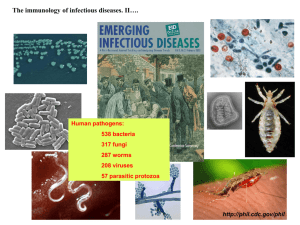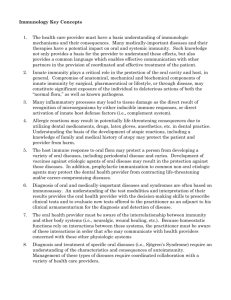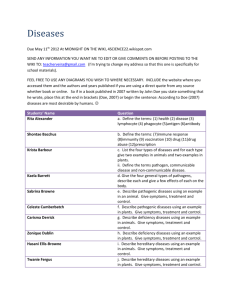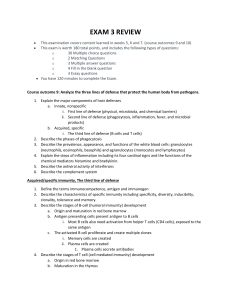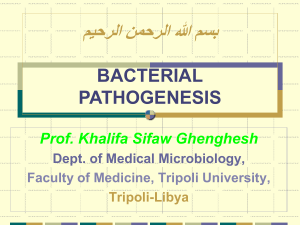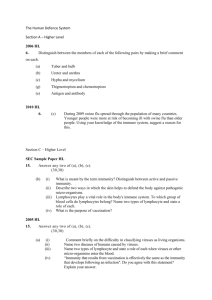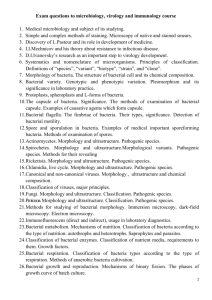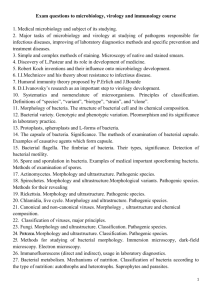Chapter 13 Respiratory Bacilli
advertisement
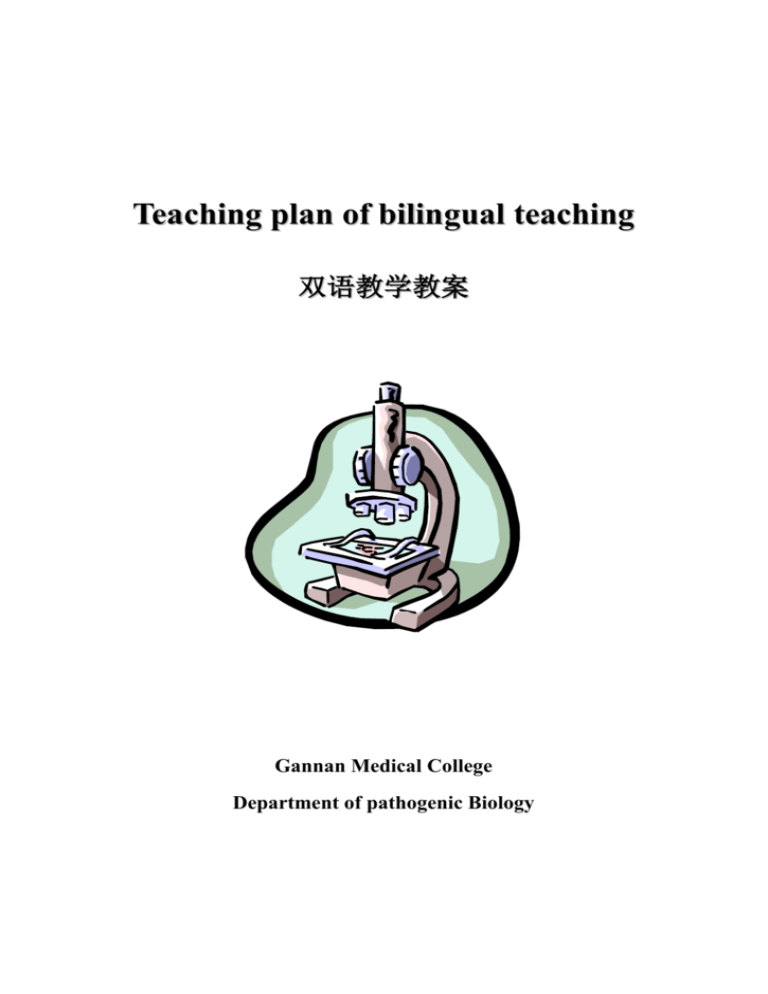
Teaching plan of bilingual teaching 双语教学教案 Gannan Medical College Department of pathogenic Biology Teacher (教师) Date (日期) Grade (年级) Speciality 专业 Lecture type (授课类型) Clinical medical (临床医学) chapters and sections (授课章节) Chapter 13 Respiratory Bacilli Objective and request 教学目的和要求 1. 2. 3. 4. Emphasis and difficulty 授课重点、难点 Reference teaching material 参考教材 Teaching aid 媒体与教具 Theory Course (理论课) Subject (课程) Class hour (学时) 4 hours Medical Microbiology 医学微生物学 Master the biological properties, pathogenicity and immunity of M.tuberculosis. Master the following concepts : BCG; Tuberculin test. Master the pathogenicity of Corynebacterium dophtheria. Understand the biological properties of Corynebacterium dophtheria. 1. the biological properties, pathogenicity and immunity of M.tuberculosis 2. the pathogenicity of Corynebacterium dophtheria 1.周正任主编.《医学微生物学》第 6 版 2.Medical microbiology(21 edition, Jawetz, Melnick, and Adelberg) Powerpoint Teach contents(教学内容) Chapter 13 Respiratory Bacilli Section 1 M. tuberculosis Ⅰ.Biological properties Shape and structure ----slender, curved rods ----acid-fast positive ----complex cell wall lipids: mycolic acid ----capsule ----non-motile; non- sporing ----L forms Cell Wall Structure ----Peptidoglycan ---- arabinogalactan layer ----high content lipid Mycolic acids 1 Cord Factor Wax-D ----polypeptide 多肽 Cultivation ----obligate aerobes ----slow growth: 18-24 hrs / 2-4 w ----fastidious: lowenstein-Jensen medium Biochemical reactions ----carbohydrate fermentation “-” ---- heat Catalase test M. tuberculosis“-” Nontuberculosis mycobacteria: “+” Sensitivity ---moist heat ----UV radiation ----alcohol Resistance ----drying ----acid ----alkaline ----dyes: e.g., malachite green Variation ----drug resistance variation ----virulent variation ------BCG (Bacliie Calmette-Guerin) Ⅱ.Pathogenesis –virulence factor neither endotoxin or exotoxin nor invasive enzyme intracellular pathogen Lipid Phosphatide --- Stimulate monocytes proliferation---form tubercle ---Inhibit proteinase--- form caseous necrosis Mycolic acid ---A large fatty acid ----Associated with acid-fast property Cord factor Associated with virulence Inhibit migration of leukocyte to form chronic granuloma Bind to mitochondrial membranes, cause functional damage to respiration and oxidative phosphorylation Wax D Act as an adjuvant Sulfatides Inhibit the fusion of phagosome and lysosome Protein: tuberculin 2 Polysaccharides Capsule Ⅲ.Pathogenesis – disease Pathogens M. tuberculosis-- only human host M. bovis-- human and cattle Transmission respiratory route (main) gastrointestinal route impaired skin Clinical manifestations and types ----Lung infection (pulmonary tuberculosis ) primary type: acute and mild; primary complex reactivation type: chronic and severe; caseation ----Infection outside lung Ⅳ. Immunity Protective immunity CMI Infection immunity Tuberculin test Ⅴ. Laboratory diagnosis Smears— acid-fast stain Culture – Use to confirm diagnosis of TB Ⅵ. Control Prevention BCG, bacillus Calmette-Guerin Treatment principle: early, sufficient, recombination M. Leprae Ⅰ. Biological properties Intracellular parasites Not grow on artificial media and cell culture Grow in footpads of mice , armadillo Optimal temperature: 30℃ Ⅱ.pathogenesis Transmission Respiratory tract (main) Contact Clinical types lepromatous type 3 tuberculoid type borderline form indeterminate form Ⅲ. Laboratory diagnosis Pathogen examination Lepromin test Ⅳ. Prevention and control BCG prevention ulfone-diamino diphenyl sulfone (dapsone), rifampin Section 2 C. diphtheriae Ⅰ. Biological properties Shape and structure ----G+, “Club-shaped”, pleomorphic: V form; non- branching ----Non-sporing; non-motile; non-capsulate ----metachromatic granules within the rods (polar body) Culture ----Aerobic/facultatively anaerobic ----blood/serum agar medieum ----blood/serum tellurite (K2TeO3) media --- -colonies appear dark gray to black: gravis; intermedius; mitis Sensitivity ----moist heat (100℃, 1 min; 58℃,10 min) ---- disinfectants; ---- penicillin Resistance ----drying ---- cold Variation Ⅱ. Pathogenesis – virulence factor Diphtheria toxin Cord factor K antigen Ⅲ. Immunity Persistent immunity ----Antitoxin; IgG/IgA ----A correlation between the immunity and the age * 6 months----not sensitive * 1 year or so---- sensitive death * adult-----have immunity Ⅳ. Laboratory diagnosis Specimen : swab, suspected lesions 4 Smear: alkoline methylene blue, Gram stain, and Albert stain Culture – Blood plate, Loeffler slant, and Tellurite plate Virulence test – In vivo – “Virulence” test, protective test – In vitro – Elek plate test, serological precipitation test of soluble antigen and antibody Ⅴ.Prevention and Treatment Prevention ----Active immunization – Triple vaccine DPT ----Passive immunization – Antitoxin Treatment ----Diphtheria antitoxin, antibiotics (such as penicillin) Biological properties question 思考题 Pathogenicity and immunity of M.tuberculosis? 5


